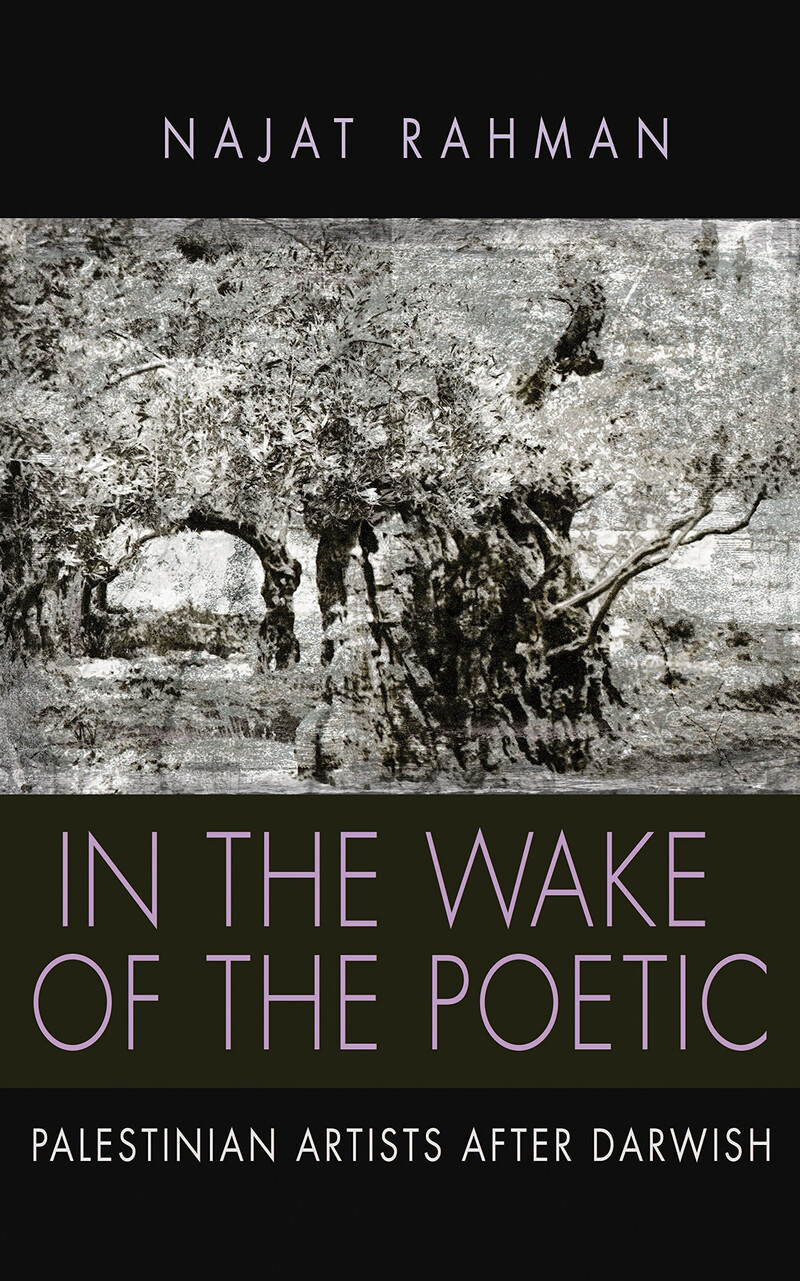The Electronic Intifada 4 August 2017

In the Wake of the Poetic: Palestinian Artists after Darwish by Najat Rahman, Syracuse University Press (2015)
Perhaps inevitably, the ways in which Palestinian literature and art are thought of and written about are strongly colored by the memory and influence of the great poet Mahmoud Darwish almost a decade since his death.
Najat Rahman’s book considers how much Palestinian art has changed in the years after his death due to this influence.
Rahman’s key argument is that Palestinian cultural production – literature, painting, film, dance and music – has shifted away from a focused “literature of resistance” as articulated by the writer and activist Ghassan Kanafani, who was assassinated in an Israeli car bomb in 1972.
Instead, she suggests, recent Palestinian art demonstrates “how artists rearticulate the political in their aesthetic in the absence of true politics.” Since the failure of the Oslo peace accords in the late 1990s and the end of the second intifada, Rahman sees Palestinian artists as lacking the kind of clear political direction which, for Kanafani and his generation in the 1960s and ’70s, was provided by active resistance movements, such as the Palestine Liberation Organization.
With parties such as Fatah losing much of their credibility and organizations like the leftwing Popular Front for the Liberation of Palestine greatly declining in membership, recent artists are seen as engaging with the Palestinian struggle on themes of liberation, empowerment and solidarity – not with allegiance to a single message or the ideas of a particular faction of the national movement.
A wide influence
Rahman’s evidence lies in an examination of emerging and active artists working in such media as literature, film, music and the visual arts.
In their works, she identifies art used not as a call to arms in a focused resistance, but as a way of questioning political dominance. She views cultural production as empowering individuals through themes of “dispersion, loss, dispossession and belonging.” These allow artists to express a sense of solidarity and identification across borders – between Palestinian refugees, Palestinians living in diaspora, and those Palestinians in Gaza, the West Bank, and the state of Israel.
The various art forms are not seen as separate entities but as an interrelated field in which the poetry of Darwish is viewed as influencing other types of creativity.
The first chapter, therefore, looks at the relationship between Darwish’s work and that of later writers such as Ghassan Zaqtan, Liana Badr and Suheir Hammad. Discussing Darwish’s own treatment of themes such as exile, journey and homecoming, Rahman traces how these other artists engage with the same topics and how and where they intersect with, or diverge from, the poetics and politics of Darwish’s vision – for instance, in Zaqtan’s poetic focus on separation from his family and home.
The following chapters reflect a similar trajectory in other media, examining the films of Elia Suleiman, Hany Abu-Assad and Rashid Masharawi, the visual art of Mona Hatoum and Sharif Waked, the generationally shifting music of classical or folk traditions as performed by Reem Talhami, Marcel Khalife and Reem Kelani, and the rap and hip-hop of artists such as DAM and Arapeyat.
Cultural elite
As an academic book looking at often avant-garde art, some parts of In the Wake of the Poetic are dense and technical, especially the early chapters in which Rahman describes the theories behind her ideas.
Unusually for an academic text, however, Rahman focuses on contemporary, experimental artists. Darwish’s poems, she points out, were, and still are, genuinely popular among all levels of society – in “high art,” in spoken word or in songs, such as those of Lebanese star Marcel Khalife.
Among present-day Palestinians, however, many of the artists covered in this book might only be seen by an elite minority in art galleries or exclusive concert halls. Popular appeal instead turns toward hip-hop, as mentioned in the book’s final chapter, or the pop songs of Mohammed Assaf, the Gazan winner of the international Arab Idol competition in 2014.
This book is significant in that it tackles the works of several artists not widely analyzed by European and US scholars of Palestinian literature and culture, including some whose work is somewhat or completely inaccessible to non-Arabic-speaking audiences.
The elite and marginal nature of the work does highlight the problem, common among academic cultural studies, of the extent to which art reaching few people is discussed and debated. Popular art and music, which touches a much larger proportion of the population, is meanwhile ignored, or seen only in sociological rather than aesthetic terms.
Rahman’s attempt to explore all forms of Palestinian culture in her study also leads at times to a sense that we are only skimming the surface of the subject, particularly in the chapter on music. A deeper focus on fewer forms of art might have allowed for a more detailed analysis.
Nevertheless, Rahman’s book will appeal to those with an in-depth interest in Palestinian culture, as it considers in important ways the shifts between generations of artists and their differing influences and interactions with politics and popular ideas.
Sarah Irving is author of a biography of Leila Khaled and of the Bradt Guide to Palestine and co-editor of A Bird is not a Stone.





